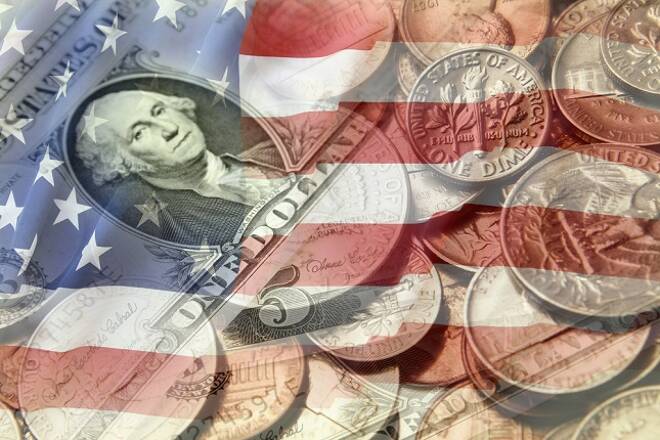Advertisement
Advertisement
U.S. First Quarter GDP Slowdown Likely Temporary
By:
According to the Commerce Department, gross domestic product increased at a 2.3 percent annual rate. Not only did weak consumer spending contribute to the slow growth, but also moderation in business spending on equipment and investment in home building.
Government data released on Friday showed the U.S. economy slowed during the first quarter as consumer spending grew at its weakest pace in nearly five years. However, experts deemed the setback temporary when compared to the tightening labor market and large fiscal stimulus
According to the Commerce Department, gross domestic product increased at a 2.3 percent annual rate. Not only did weak consumer spending contribute to the slow growth, but also moderation in business spending on equipment and investment in home building.
The 2.3 percent first quarter GDP growth compares to 2.9 percent growth during the fourth quarter. Economists had forecast output rising at a 2.0 percent rate in the January-March period.
First Quarter Tendencies
Some economists believe the slow first-quarter growth pace is probably not a true reflection of the economy even with evidence of weak consumer spending. They said it may have been due to a seasonal quirk. They also cited the labor market which is near full employment and strong business and consumer confidence as key reasons why the economy may be stronger than the headline GDP number indicated.
Impact of Fiscal Stimulus
Despite the weak start in the first quarter, economists support the notion that lower corporate and individual tax rates as well as increased government spending will likely lift annual economic growth to the government’s 3 percent target.
Economists expect growth will accelerate in the second quarter as households start to feel the impact of the Trump administration’s $1.5 trillion income tax package on their paychecks. The tax cuts came into effect in January.
Fed Expectations
The GDP report was in line with Fed expectations. The minutes of the March 20-21 meeting published earlier this month showed policymakers “expected that the first-quarter softness would be transitory,” citing “residual seasonality in the data, and more generally to strong economic fundamentals.”
Other Highlights
Growth in consumer spending, which accounts for more than two-thirds of U.S. economic activity, braked to a 1.1 percent rate in the first quarter. That was the slowest pace since the second quarter of 2013 and followed the fourth quarter’s robust 4.0 percent growth rate.
Income at the disposal of households increased at a 3.4 percent rate in the first quarter, accelerating from the fourth quarter’s 1.1 percent pace.
Business spending on equipment slowed to a 4.7 percent rate in the January-March quarter after double-digit growth in the second half of 2017.
Finally, investment in home building was unchanged in the first three months of the year, reflecting a decline in brokers’ commissions as an acute shortage of properties hurt home sales.
About the Author
James Hyerczykauthor
James is a Florida-based technical analyst, market researcher, educator and trader with 35+ years of experience. He is an expert in the area of patterns, price and time analysis as it applies to futures, Forex, and stocks.
Did you find this article useful?
Latest news and analysis
Advertisement
